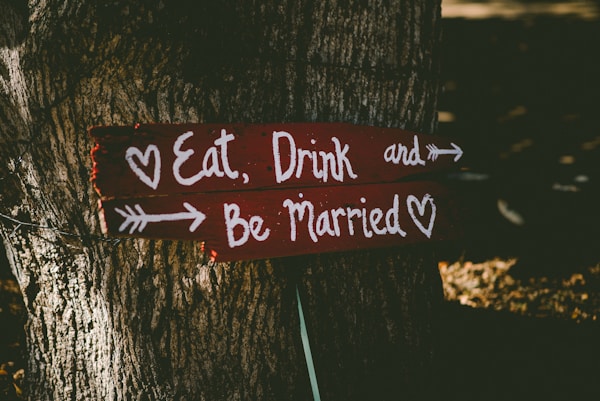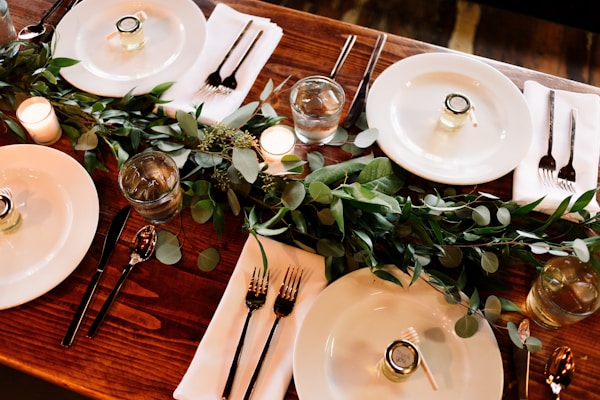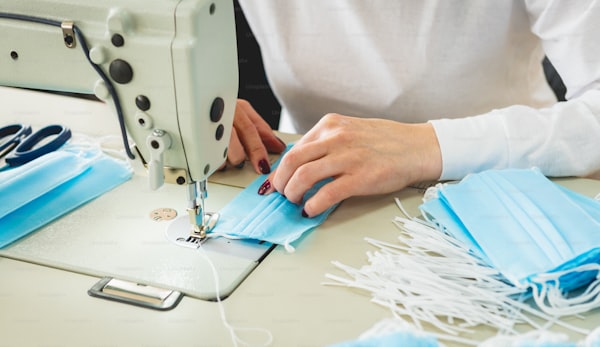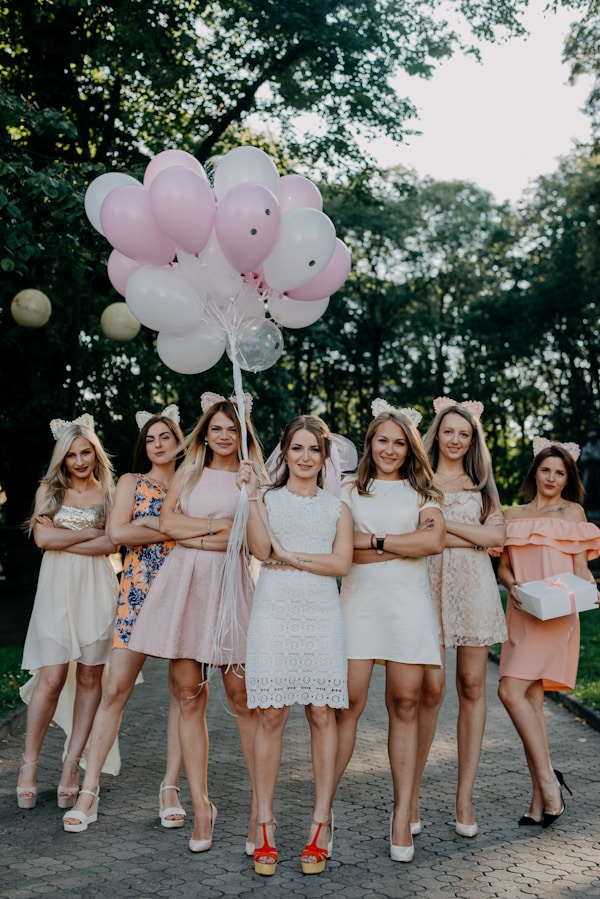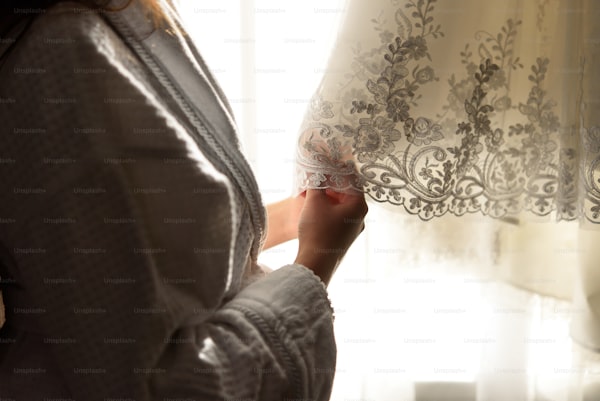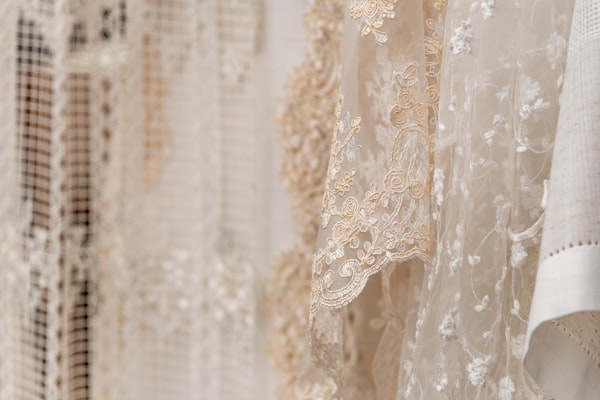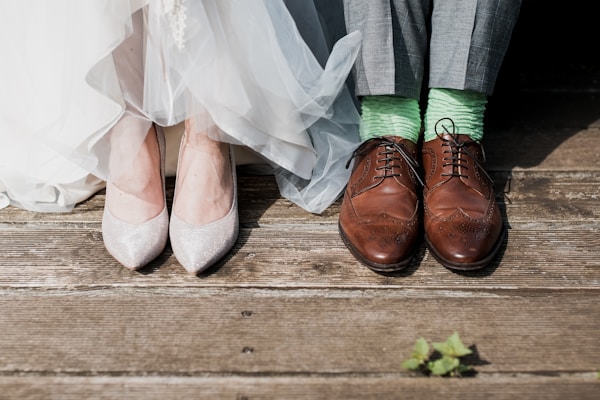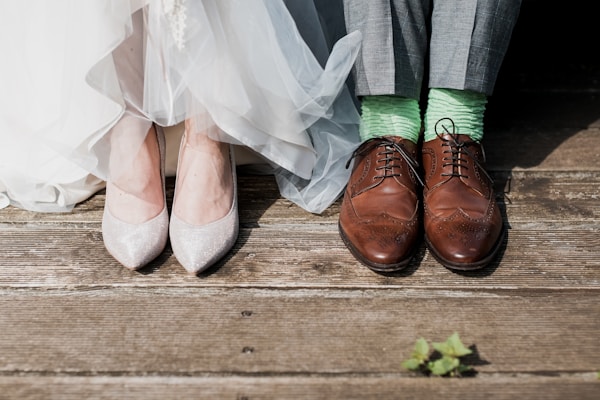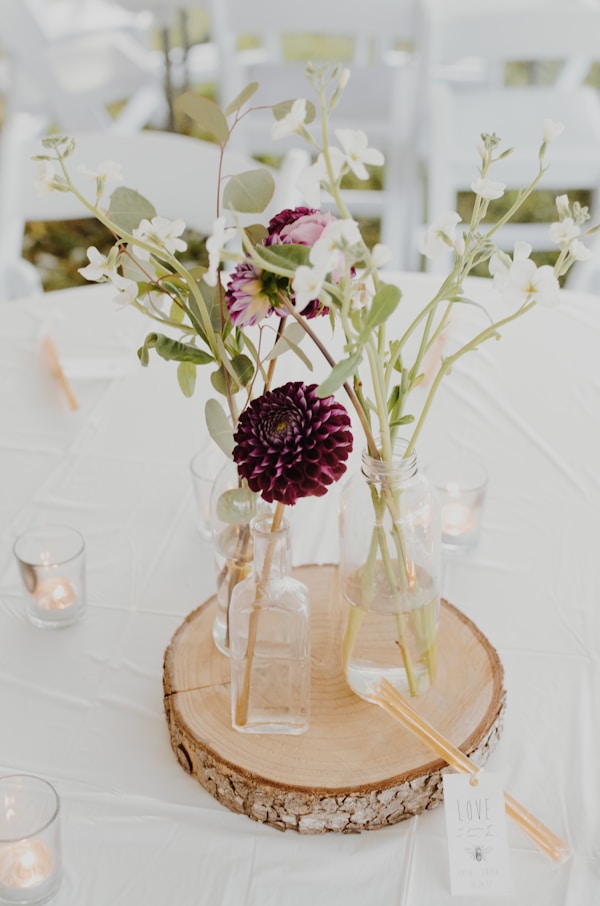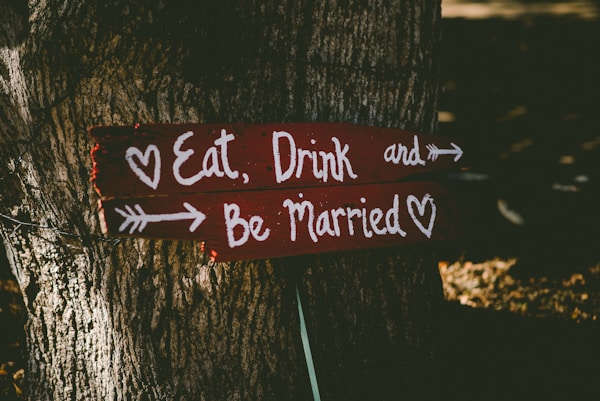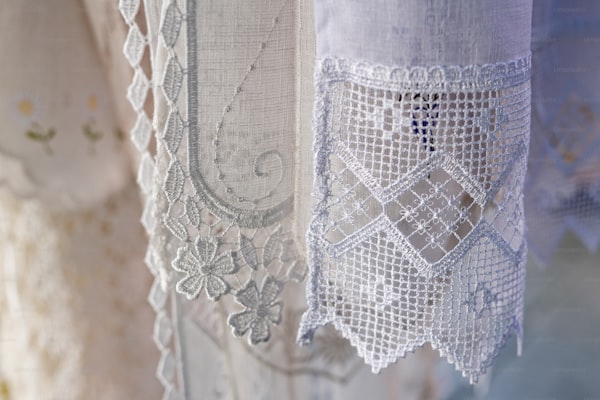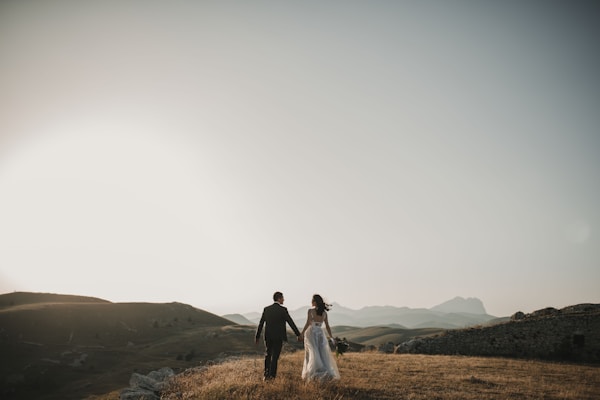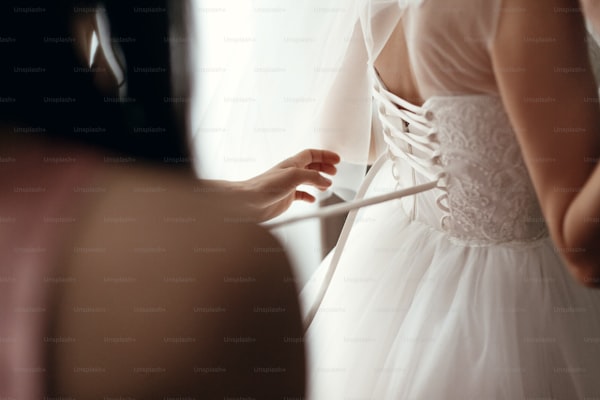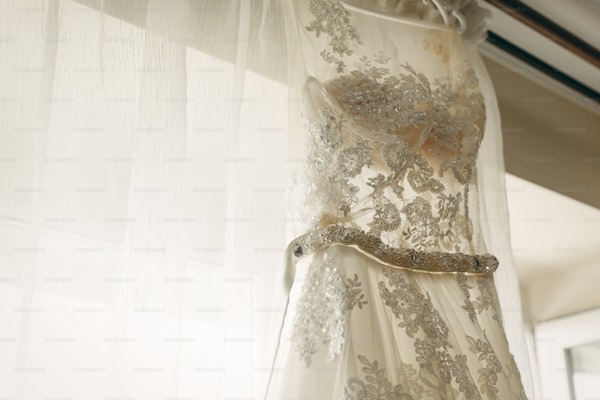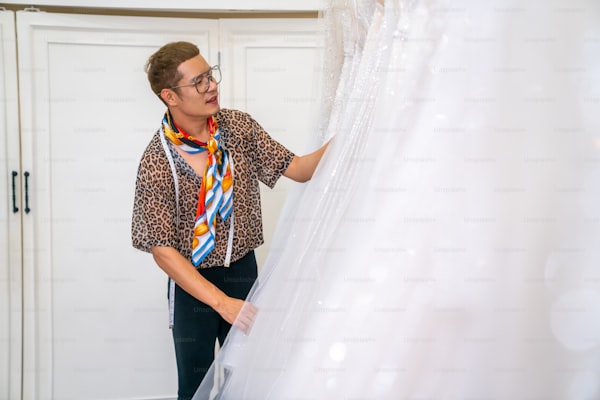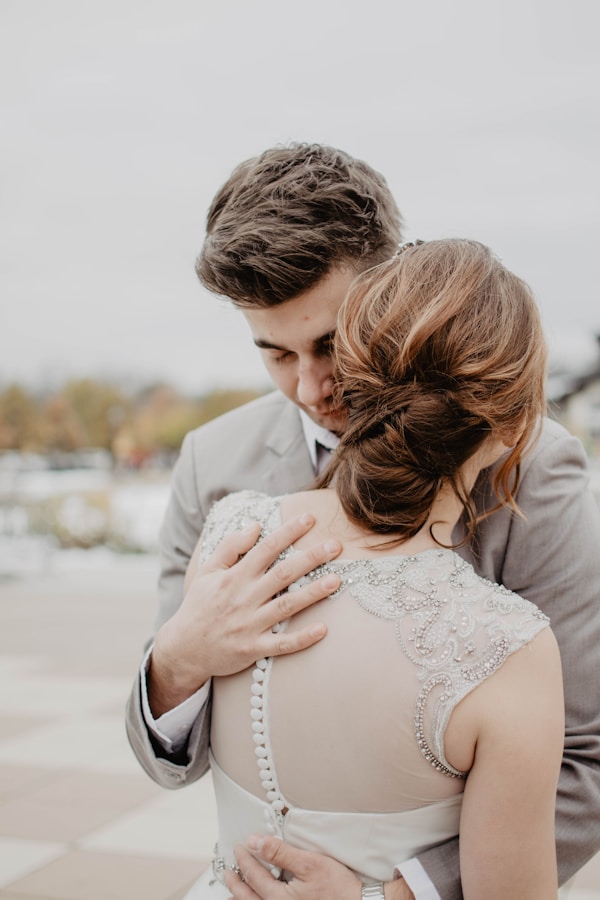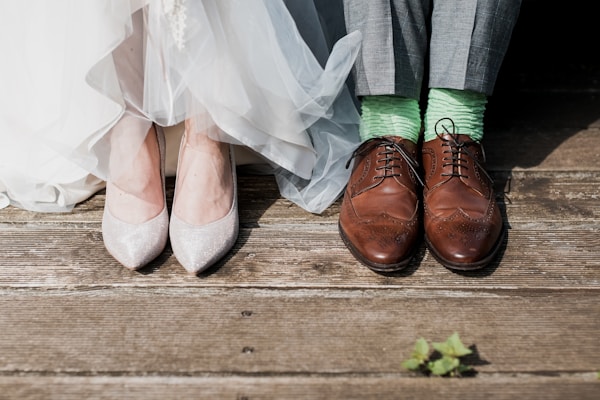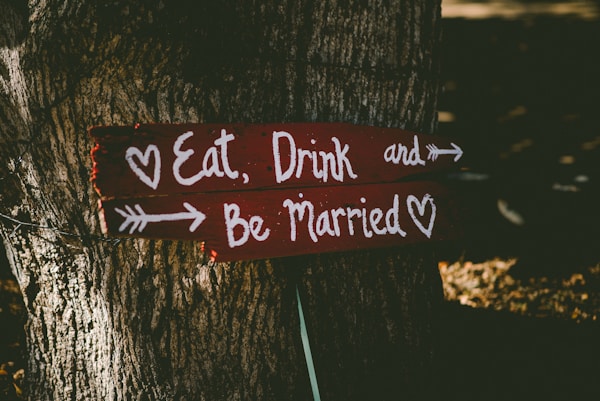Unlocking the Secrets: Techniques to Create a Wedding Dress with a Gathered Skirt
The Art and Craftsmanship Behind Gathered Skirt Wedding DressesWhen it comes to crafting the perfect wedding dress, many brides envision a beautiful gown that not only reflects their personality but also embodies the elegance of their special day. Among the various styles available, a wedding dress with a gathered skirt remains a timeless choice that exudes charm and romance. This article explores the techniques used to create such stunning gowns, ensuring you have all the insights you need to make an informed decision for your big day.What is a Gathered Skirt?A gathered skirt is characterized by its fullness and softness, created by gathering the top edge of the fabric and attaching it to the waistband. The result is a flowing silhouette that drapes beautifully, allowing for movement while adding volume to the design. This technique offers versatility, making it suitable for a variety of wedding themes, from vintage to modern chic.Popular Fabric Choices for Gathered SkirtsThe fabric selected for a gathered skirt is crucial in determining the final look of the wedding dress. Here are some popular options:Fabric TypeCharacteristicsSatinLuxurious and smooth, it provides a glorious sheen.TulleLightweight and ethereal, ideal for a whimsical look.ChiffonSoft and flowy, offers a delicate, romantic appearance.OrganzaStiff yet lightweight, adding volume without too much weight.Choosing the right fabric is essential as it influences the dress's structure and the overall aesthetic. Con...
How to Keep the Sparkle of Sequins on a Wedding Dress Forever
The Enchantment of Sequins on Wedding DressesWedding dresses adorned with sequins have an undeniable charm that adds to the overall sparkle of your special day. The shimmering effect created by these tiny discs can transform a simple gown into a breathtaking masterpiece. However, the radiance of sequins can diminish over time if not cared for properly. This article aims to provide you with comprehensive insights on how to maintain the sparkle of sequins on a wedding dress.Understanding Sequins: Materials and TypesBefore diving into maintenance tips, it’s essential to understand what sequins are made of. Sequins can be fashioned from various materials, including:Plastic - These are the most common and budget-friendly option.Metal - Offering a luxurious appearance, metal sequins can be heavier and may require specialized cleaning.Glass - Known for their brilliance, glass sequins can be fragile and need careful handling.Recognizing these materials informs you about the best care practices that will help maintain their sparkle.Daily Care TipsMaintaining the brilliance of sequins does not require extensive procedures, but daily care is crucial. Here are some tips you can incorporate into your routine:Limit Friction: Be mindful of your dress against rough surfaces. Avoid unnecessary contact with bags, chairs, or other objects that may scrape against your sequins.Store with Care: When you're not wearing the dress, store it in a breathable garment bag, away from sunlight. Exposure to...
Unveiling the Secrets: What Methods are Used to Achieve a Seamless Back Closure on a Wedding Dress?
Understanding the Seamless Back Closure in Wedding DressesChoosing a wedding dress is one of the most significant decisions for brides-to-be. Among various elements that make a dress stunning, the back closure often plays a pivotal role. This article delves deep into the methods used to achieve a seamless back closure on a wedding dress, enhancing both aesthetics and comfort.The Importance of a Seamless Back ClosureA seamless back closure results in a clean finish, providing the bride with confidence and elegance as she walks down the aisle. It can also contribute to the overall design of the dress, enhancing the silhouette and creating a flattering look. Let’s explore the various methods that designers use to accomplish this essential feature.Common Methods for Seamless Back ClosuresMethodDescriptionProsConsZipper ClosureA hidden zipper is sewn into the back of the gown.Easy to use, provides a secure fit.Can sometimes be visible if not installed correctly.Lace-Up ClosureUses laces threaded through loops or eyelets.Adjustable fit, offers a classic look.Takes longer to put on and adjust.Button ClosureButtons are sewn along the spine, often covering the zipper.Classic and elegant appearance.Buttons can come loose if not secured properly.Magnetic ClosureUtilizes hidden magnets to secure the back.Quick to fasten and unfasten.May not provide enough security for larger gowns.Method 1: Zipper ClosureZipper closures are one of the most common methods utilized for creating a seamless ...
Mastering the Art: Best Practices for Sewing a Wedding Dress with Multiple Layers
What Are the Best Practices for Sewing a Wedding Dress with Multiple Layers?Creating a wedding dress is a labor of love that requires not just skill, but also a keen understanding of various techniques, especially when it comes to working with multiple layers. Whether you're a seasoned seamstress or embarking on this journey for the first time, knowing the best practices can make all the difference. In this guide, we will explore essential tips and techniques for sewing a wedding dress with multiple layers, ensuring your creation is both beautiful and structurally sound.Understanding the Basics of LayeringWhen sewing a wedding dress that involves multiple layers—such as a base layer, a lining, and decorative elements—it’s crucial to understand how each layer interacts with the others. Here are some foundational concepts:Fabric Selection: Choose fabrics that complement each other in weight and texture. Lightweight materials like chiffon or organza work beautifully over a more structured layer.Layer Types: Common layers in wedding dresses include the lining, a tulle or crinoline underlay for volume, and the outer fabric for the main design.Seam Allowances: Different fabrics require different seam allowances. Be mindful of this during your planning phase.Essential Tools for Layered SewingHaving the right tools can ease the process of sewing multiple layers. Here is a list of essential tools you should have on hand:ToolPurposeSerger Sewing MachineTo finish edges on multiple layer...
How to Create a Stunning Wedding Dress with a Cascading Train
Introduction to Cascading Trains in Wedding DressesThe wedding dress is often considered the centerpiece of a wedding celebration, embodying elegance and personal style. Among the various designs, a cascading train stands out for its dramatic and romantic appeal. But how do you create a wedding dress with a cascading train? In this article, we will explore the essential steps, materials, and techniques necessary to craft this iconic gown. Additionally, we'll discuss common questions related to wedding dress designs, inspiring you to create a masterpiece that complements your unique bridal vision.Understanding the Cascading TrainA cascading train refers to a long, flowing extension at the back of a wedding dress that gracefully trails behind the bride. This feature not only adds elegance but also enhances the overall silhouette of the gown. The train can range from a few inches to several feet long, offering brides a variety of options to choose from. Knowing how to design a cascading train involves understanding the different styles, fabric choices, and construction techniques.Types of Cascading TrainsType of TrainDescriptionBest Suited ForChristian TrainA short train that barely sweeps the ground.Informal weddingsChapel TrainExtends about 3 to 4 feet from the waist.Traditional church weddingsCathedral TrainApproximately 6 to 8 feet long, creating a dramatic effect.Formal ceremoniesChoosing the Right FabricWhen creating a cascading train, the fabric you choose is crucial. Dif...
Unveiling the Art of Design: Techniques Used in Crafting a Wedding Dress with a Tulip Skirt
What Techniques Are Used to Create a Wedding Dress with a Tulip Skirt?In the realm of bridal fashion, the wedding dress is often considered the pièce de résistance of the big day. Among the myriad of styles available, the tulip skirt stands out for its striking silhouette that flatters a variety of body types. This article explores the techniques employed in creating a wedding dress with a tulip skirt, focusing on design principles, fabric choices, and construction methods that ensure a stunning final product.The Essence of a Tulip SkirtThe tulip skirt is characterized by its unique shape that mimics the petals of a tulip flower. This flattering design emphasizes the waist while curving gently over the hips before tapering in at the hem. The skirt often consists of multiple layers and can be made from various fabrics, making it a versatile choice for brides. Understanding the techniques behind this design enhances both the creation and selection processes for brides-to-be.Key Techniques in Designing a Tulip Skirt Wedding DressCreating a wedding dress with a tulip skirt involves several crucial techniques. Let’s delve into each of them:Design SketchingInitial sketches help visualize the skirt's shape and flow.Pattern MakingCreating accurate patterns is essential for the tulip shape.Fabric SelectionChoosing the right fabric affects the drape and structure of the skirt.Cutting TechniquesPrecision in cutting is crucial for achieving the tulip silhouette.Seaming and FinishingSeami...
Mastering the Art of Wedding Dress Production: Managing Unique Fabric Textures
How Do You Manage the Production of Wedding Dresses with Unique Fabric Textures?Wedding dresses are not just garments; they are emblems of dreams, love, and commitment. With brides increasingly seeking personalization, the demand for dresses made from unique fabric textures has surged. But how do manufacturers navigate the complexities of producing these exquisite pieces? This article will unravel strategies used in the production of wedding dresses, especially when it comes to unique fabric textures, and share some insights on managing this process efficiently.The Importance of Unique Fabric TexturesThe wedding dress is a bride’s centerpiece, and the fabric plays a vital role in its overall aesthetic. Unique fabric textures such as lace, tulle, silk, and chiffon can significantly affect the final look and feel of a gown. Here’s a brief overview of popular fabric types used in wedding dresses:Fabric TypeDescriptionUnique QualitiesLaceA delicate, intricately woven fabric.Highly decorative, adds elegance.TulleA lightweight, sheer fabric often used for overlays.Creates volume and ethereal looks.SilkA luxurious, smooth fabric known for its sheen.Soft drape and high comfort level.ChiffonA lightweight, semi-sheer fabric.Flowy movement and layered looks.Unique fabric textures not only enhance visual appeal but also contribute to the emotional experience of a wedding—each type can evoke different memories and sentiments for the bride.Managing Production: Key Factors to ConsiderProdu...
Explore Effective Methods to Reinforce the Hem of a Wedding Dress
Understanding Hem Reinforcement Techniques for Wedding DressesYour wedding day is one of the most important days of your life, and choosing the perfect wedding dress is a crucial part of that experience. However, ensuring that your dress looks flawless throughout the day is equally important. A common concern for brides is the integrity of the dress hem. This article will explore the various methods to reinforce the hem of a wedding dress, ensuring that it remains stunning and intact.The Importance of Hem ReinforcementThe hem of a wedding dress is subject to various stresses, from walking down the aisle to dancing at the reception. Without proper reinforcement, the hem can fray, unravel, or develop wear patterns over time. Understanding the techniques used to reinforce the hem of a wedding dress can help you maintain its beauty and longevity.Common Methods for Hem ReinforcementThere are several methods employed by professional seamstresses and designers to reinforce the hem of a wedding dress. Below are some of the most effective techniques:MethodDescription1. Hem StitchingThis method involves a series of small stitches along the hemline. It offers durability while keeping the stitching subtle and inconspicuous.2. Bias TapeBias tape can be sewn onto the hem's edge to add extra support. This fabric strip is cut on the bias, allowing it to stretch slightly, which helps maintain the hem’s shape.3. Horsehair BraidA stiff nylon netting that can be sewn into the hem adds structure ...
Essential Considerations for Designing a Wedding Dress for an Outdoor Wedding
Outdoor weddings are becoming increasingly popular due to their romantic settings and natural ambiance. However, designing a wedding dress that complements the unique circumstances of an outdoor venue involves several considerations. In this article, we will explore the key factors to keep in mind when creating the perfect wedding dress for an outdoor wedding, ensuring that the bride looks stunning while also enjoying the day without discomfort.Key Factors to ConsiderWhen designing a wedding dress for an outdoor wedding, it's essential to address various environmental factors, personal preferences, and practical needs. The key factors to consider include:FactorDescriptionFabric ChoiceLightweight and breathable materials are crucial for comfort in outdoor settings.Style and LengthConsider the location and time of year to determine the appropriate dress style and length.Weather PreparednessDesign for unexpected weather changes with layers or removable components.FootwearOpt for suitable shoes that can handle uneven terrain.Location-Specific DetailsCustomize designs based on the specific outdoor venue, like gardens or beaches.Color PaletteChoose colors that align with the natural surroundings and season.Fabric ChoiceThe choice of fabric is paramount when designing a wedding dress for an outdoor venue. Since outdoor weddings often take place during warmer months, lightweight and breathable fabrics such as chiffon, silk, or lace work best. These materials allow for better airflow,...
How to Achieve a Fitted Look in a Wedding Dress with a High-Low Hemline
Your wedding day is a celebration of love, joy, and style. Choosing the perfect wedding dress can be an overwhelming experience, especially with the vast variety of designs available. One trendy option that has captured the hearts of brides is the high-low hemline wedding dress. This unique style combines elegance with modern flair, making it perfect for brides who want to stand out on their special day. However, achieving a fitted look with a high-low hemline can pose certain challenges. This article will guide you through tips and tricks to ensure that you not only look stunning but also feel comfortable. Let’s explore how to achieve a fitted look in a wedding dress featuring a high-low hemline.Understanding the High-Low HemlineA high-low hemline is characterized by a shorter front that gracefully cascades into a longer back. This design allows brides to showcase their legs while still enjoying the drama of a longer train. This asymmetric cut not only adds a modern touch but also offers a unique opportunity for brides who desire to highlight their personal style.**Versatile Style**: High-low dresses suit various wedding themes, from beach weddings to formal affairs.**Flattering Silhouette**: The fitted bodice paired with a flowing skirt can enhance self-confidence and highlight curves.**Comfort Factor**: Less fabric at the front allows for ease of movement, making it ideal for dancing.Choosing the Right FabricFabric choice plays a crucial role in how fitted a dress appears....
Exploring Techniques for Creating Wedding Dresses with Intricate Lace Details
Understanding the Art of Intricate Lace in Wedding DressesWeddings are moments of joy and celebration, and one of the most captivating elements of any wedding is the bride's gown. Over the years, wedding dresses have evolved, and intricate lace details have emerged as a stunning trend that captures the essence of elegance and sophistication. In this article, we will dive into the various techniques used to create wedding dresses with intricate lace details, exploring the artistry and craftsmanship required to bring such exquisite designs to life.The Allure of Lace in Wedding FashionLace has been a symbol of romance and femininity for centuries, making it an ideal choice for brides. Its delicate patterns and ability to add texture and depth make lace an indispensable element in wedding dress design. From vintage-inspired gowns to modern silhouettes, lace can be integrated in numerous ways, creating endless possibilities for brides to express their unique styles.1. Selecting the Right LaceThe first step in creating a wedding dress with intricate lace details is choosing the right lace fabric. There are various types of lace, and each offers distinct characteristics:Type of LaceCharacteristicsChantilly LaceLightweight and sheer, ideal for layering.Venise LaceHeavier with a raised design, perfect for detailing.Alençon LaceEmbroidery on tulle, provides elegance and texture.Choosing the right lace not only impacts the visual appeal of the dress but also determines how the fabric wi...
Mastering Delicate Hand-Sewn Embroidery on Wedding Dresses
Understanding Delicate Hand-Sewn EmbroideryWhen it comes to wedding dresses, few elements are as breathtaking as delicate hand-sewn embroidery. This intricate artistry transforms a simple gown into a stunning masterpiece. However, handling such delicate embroidery requires careful attention to detail to ensure the beauty is preserved. In this article, we'll explore how to handle delicate hand-sewn embroidery on a wedding dress properly, alongside common questions and expert tips.The Importance of Hand-Sewn EmbroideryHand-sewn embroidery not only adds a personal touch to wedding dresses but also enhances their overall aesthetic appeal. The intricacies can range from floral patterns to elaborate lacework, making each dress unique. It's a labor-intensive process that reflects the craftsmanship and creativity involved in designing wedding attire.Common Types of Hand-Sewn EmbroideryBefore diving into the handling techniques, it’s essential to recognize the types of embroidery commonly found on wedding dresses:Type of EmbroideryDescriptionFloral EmbroideryFeaturing intricate designs of various flowers, often using vibrant threads.Lace EmbroideryDelicate lace is sewn into the fabric to create a soft and elegant look.Beadwork EmbroideryIncorporates beads for added sparkle, glimmering under the wedding day lights.Appliqué EmbroideryInvolves sewing a piece of fabric onto the dress, creating a layered effect.Handling Delicate Hand-Sewn EmbroideryNow that we appreciate the artistic value...
Ensuring the Longevity of Wedding Dress Fabrics: Methods and Tips
Understanding Wedding Dress FabricsWhen it comes to the magical day of your wedding, every detail counts, especially the wedding dress. The fabric of a wedding dress plays a crucial role in how the dress looks, feels, and, most importantly, lasts over time. With various materials available, understanding what methods are used to ensure the longevity of wedding dress fabrics is essential for brides-to-be. In this article, we will explore the most popular wedding dress fabrics and the best practices for their care and preservation.Popular Wedding Dress FabricsBefore delving into methods for ensuring fabric longevity, let's first examine the types of fabrics commonly used in wedding dresses:FabricDescriptionSilkLuxurious and smooth, silk is a favorite among brides for its elegance and draping qualities.ChiffonThis lightweight, sheer fabric is often used for flowing skirts and overlays, creating a romantic look.LaceLace adds intricate detailing and texture, often used for sleeves or overlays.SatinA glossy, heavy fabric, satin gives a structured appearance ideal for formal wedding dresses.TulleThis net-like fabric is commonly used for veils and skirts, adding volume and a whimsical feel.Methods to Ensure Longevity of Wedding Dress FabricsNow that we have a grasp of the various fabrics, let's discuss the methods used to ensure their longevity. Proper care and handling play a critical role in preserving these delicate materials.1. Choosing Quality FabricsThe first step in ensuring t...
How to Preserve the Original Design of a Wedding Dress During Extensive Alterations
Weddings are a celebration of love and unity, and for many brides, the wedding dress symbolizes one of the most significant moments in their lives. However, what happens when your dream wedding dress requires extensive alterations? The thought of transforming this cherished garment may raise concerns about maintaining its original design. In this article, we'll explore effective strategies to ensure the essence of your wedding dress remains intact, even during substantial modifications.The Importance of Retaining Original ElementsWhen it comes to wedding dresses, many brides have a clear vision of how they want their dress to look on their special day. Retaining certain original design elements is crucial for several reasons: Emotional Value: Your wedding dress holds sentimental significance. Altering it too much might detract from its emotional value. Photographic Consistency: Your vision for your wedding day is often depicted in inspiration photos. Maintaining the original design helps align the final look with those images. Market Value: A dress altered too extensively may decrease its resale value in the future.Key Considerations Before Alterations BeginBefore diving into the alteration process, consider the following aspects:1. Choose the Right TailorExperience Matters: Select a tailor who specializes in wedding dresses and has a solid portfolio. They'll be familiar with preserving intricate design elements throughout the alteration process.2. Know Your Dress Material...
Creating a Wedding Dress with Layered Fabrics: Techniques for Added Depth
Introduction to Layered Fabrics in Wedding Dress DesignDesigning a wedding dress is an art that combines elegance, creativity, and technical skill. One of the most sought-after styles in bridal fashion is the use of layered fabrics to add depth and dimension to the gown. This technique not only enhances the visual appeal but also creates a unique silhouette that can flatter any bride. In this article, we will explore various techniques used to achieve this stunning look, the materials best suited for layering, and tips for brides who wish to incorporate these elements into their wedding attire.The Importance of Layered FabricsLayered fabrics are crucial in wedding dress design because they can transform an ordinary gown into an extraordinary piece of art. By using multiple layers, designers can play with colors, textures, and patterns to create depth. Additionally, layering is an effective way to add volume without making the dress heavy or cumbersome, which is essential for a bride who wants to feel comfortable on her special day.Understanding Fabric Types for LayeringFabric TypeDescriptionChiffonA lightweight, sheer fabric that adds a delicate touchTulleA stiffer fabric often used to create volume, perfect for skirtsLaceProvides intricate designs and can be used as an overlayOrganzaA thin, crisp fabric that holds its shape well for structured layersUsing a combination of these fabrics can result in a captivating wedding dress. For instance, a lace overlay on a tulle skirt c...
How to Prevent Wedding Dress Fabric from Losing Its Shape Over Time
When it comes to weddings, the dress is often the centerpiece of the whole celebration. However, one of the greatest concerns brides have after their big day is how to preserve their wedding dress for the future. A critical aspect of this preservation is preventing the fabric of the wedding dress from losing its shape over time. In this article, we will explore effective strategies to maintain the integrity of wedding dress fabrics, ensuring that they look just as beautiful years later as they did on the day of the wedding.Understanding Wedding Dress FabricsWedding dresses come in a variety of fabrics, each with its unique properties and care requirements. The most common fabrics include:Fabric TypeCharacteristicsCare TipsSatinLuxurious, smooth texture, prone to creasing.Avoid heavy folding and store in a breathable garment bag.TulleLightweight, delicate mesh, can easily lose shape.Store flat and avoid heavy pressure on top.LaceIntricate designs, can be stiff or soft, may fray.Handle with care and keep away from rough surfaces.ChiffonSoft, flowing fabric, can easily become wrinkled.Store hung up to maintain flow and avoid crushing.Understanding the fabric of your wedding dress is vital in preventing wear and tear. Different fabrics require different care methods, and knowing these can help preserve the shape of your dress.Proper Storage TechniquesOne of the best ways to prevent your wedding dress from losing its shape is through proper storage:1. Choose the Right Storage Cont...
What Methods Are Used to Create a Wedding Dress with Unique Sleeve Designs?
Creating Unique Wedding Dress Sleeve DesignsIntroduction to Unique Sleeve Designs in Wedding DressesA wedding dress is often one of the most cherished garments in a woman’s life, symbolizing love, commitment, and individuality. Among the various elements of a wedding dress, the sleeves hold a significant place in defining its overall style and elegance. In recent years, brides have increasingly sought unique sleeve designs that reflect their personality and taste. But what methods are used to create these stunning and distinctive sleeve designs? In this article, we will explore the different techniques and materials employed in crafting beautiful wedding dress sleeves.1. Understanding Sleeve StylesBefore diving into the methods of creation, it’s vital to understand the various sleeve styles that can be incorporated into a wedding dress. Some popular styles include: Cap Sleeves: Small and delicate, these add a touch of elegance without overwhelming the dress. Long Sleeves: Ideal for a classic look, long sleeves can be made from various fabrics. Bell Sleeves: These charming sleeves flare out from the elbow, adding a whimsical touch. Off-the-Shoulder Sleeves: This style showcases the shoulders and collarbone, perfect for a romantic vibe. Lace Sleeves: Often used for a vintage look, lace can bring an air of sophistication.2. Techniques for Creating Unique Sleeve DesignsThe craftsmanship behind unique sleeve designs requires a deep understanding of fashi...
Achieving a Romantic Look with a Wedding Dress Using Soft Materials
Introduction to Romantic Wedding DressesYour wedding day should be filled with love, joy, and unforgettable memories, and the wedding dress plays a significant role in making it special. Among the myriad styles available, achieving a romantic look with your wedding dress using soft materials can create a dreamy atmosphere that complements the essence of love. But how do you achieve this aesthetic? In this article, we will explore the methods, materials, and styles that can help you achieve that romantic look, along with tips and tricks on enhancing this enchanting theme.Understanding Soft MaterialsSoft materials are essential in creating a romantic wedding dress. Fabrics such as chiffon, tulle, silk, and lace can evoke feelings of elegance and softness. Understanding these materials' characteristics can help you select the best options for your dress. Here’s a brief overview of some soft materials commonly used in romantic wedding dresses:MaterialCharacteristicsBest ForChiffonLightweight and flowy, sheer appearanceSoft, layered skirts or overlaysTulleStiff yet delicate, creates volumeBall gown silhouettes or veilsSilkLuxurious, smooth with a slight shineBody-hugging dresses that drape beautifullyLaceTextured, provides intricate detailAdding romantic patterns and overlaysChoosing the Right SilhouetteThe silhouette of your wedding dress greatly influences the romantic vibe you wish to achieve. Let’s explore some timeless silhouettes that pair beautifully with soft materials:A-L...
Unveiling the Secrets: Best Practices for Designing a Wedding Dress with a Sheer Back
Introduction to Sheer Back Wedding DressesIn the world of bridal fashion, wedding dresses with sheer backs have become increasingly popular. This exquisite design option combines elegance and sensuality, allowing brides to showcase their style while maintaining a sense of modesty. However, designing such a dress involves carefully planned techniques to achieve a beautiful and flattering look. In this article, we will explore the best practices for creating a wedding dress that features a stunning sheer back, along with some valuable tips and tricks.Understanding the Appeal of Sheer Back Wedding DressesSheer backs have captivated brides for various reasons. They provide a unique opportunity to blend tradition with contemporary fashion. Brides can express their individual style while still adhering to the classic elements of wedding attire. Many brides are drawn to sheer backs for their ability to enhance the silhouette, providing a beautiful contrast against the rest of the dress.Additionally, sheer materials can create a sense of intrigue, allowing for a tasteful reveal of the bride's skin while still maintaining modesty, making them perfect for various wedding themes, from whimsical garden weddings to elegant ballroom ceremonies.Key Factors to Consider in DesignWhen designing a wedding dress with a sheer back, several considerations must be kept in mind:Fabric Selection: Choose high-quality, lightweight fabrics like chiffon, tulle, or lace that will create a soft, ethereal l...
Mastering Wedding Dress Alterations: A Guide to Hand-Stitched Details
How Do You Handle Alterations for a Wedding Dress with Hand-Stitched Details?For many brides, wedding dress alterations can be as crucial as selecting the perfect gown. When it comes to dresses with intricate hand-stitched details, however, the process can become a bit more complex. In this guide, we will explore how to handle alterations for these delicate pieces, ensuring your dream dress fits flawlessly on your special day.The Importance of Professional AlterationsWhen altering a wedding dress, especially one adorned with hand-stitched embellishments, it is essential to seek the assistance of a professional seamstress or a specialist experienced in wedding attire. Unlike ordinary clothing, wedding dresses often require a more refined approach to preserve their intricate detailing.Finding the Right SeamstressStart by searching for a seamstress who specializes in bridal wear. Look for reviews online, ask for recommendations from friends or family, and check out local bridal shops for suggestions. A skilled seamstress will not only understand the nuances of working with delicate fabrics but also appreciate the beauty of handcrafted details.What to Expect During the Alteration ProcessThe alteration process involves multiple fittings and should start at least 2-3 months before your wedding day. Here’s a breakdown of what you can expect:StepDescriptionInitial ConsultationYour first meeting to discuss the dress and the changes needed.First FittingThe seamstress will pin and mark...
